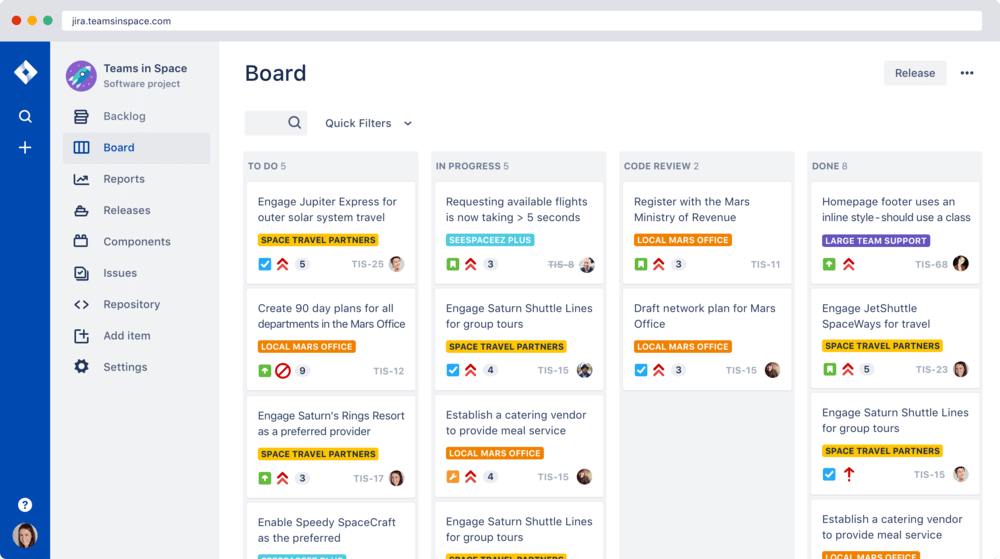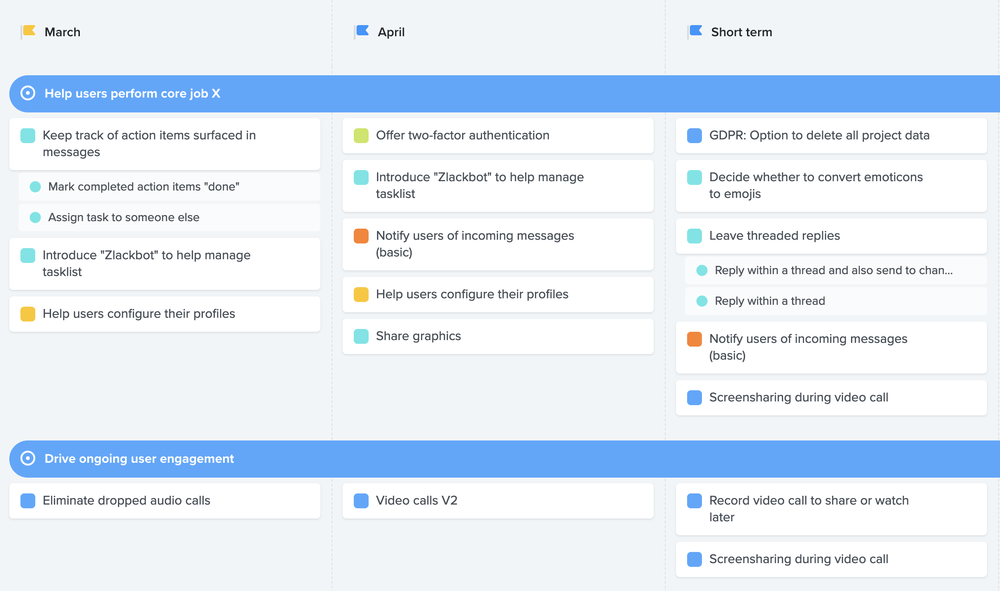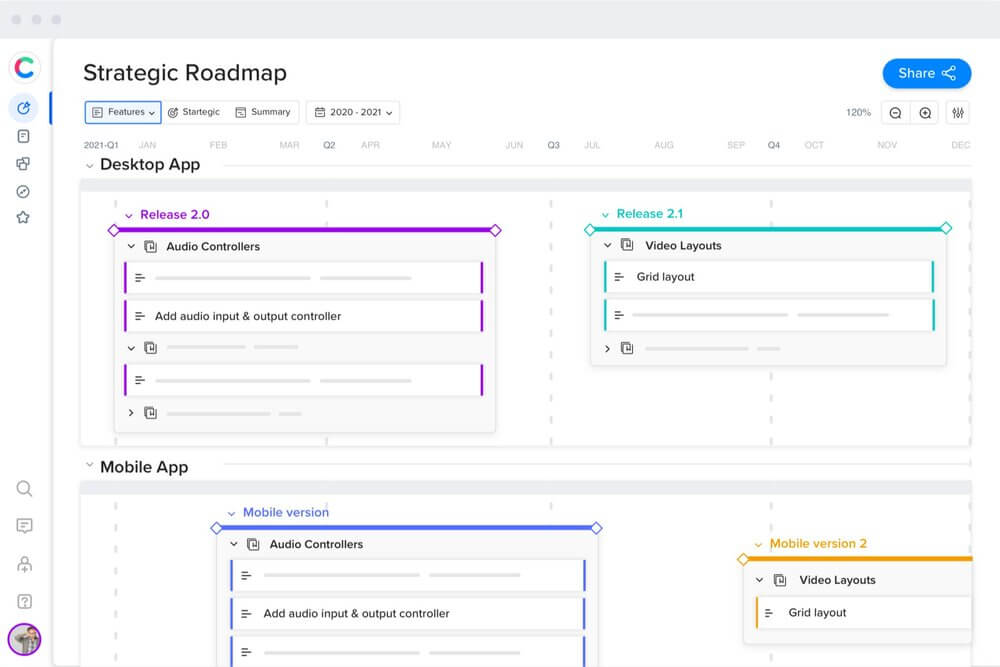Software Product Management in 2023: Challenges, Trends, and Approaches
Modern software products are created in a high-stakes environment and require deep strategic planning that increases their chances for success. Learn how to release the right product to market with the latest software product management practices.
The competition in the software product market grows with the number of digital businesses. The winners in this game are the products that justified their existence for a particular target audience. In other words, the most successful product managed to answer why they exist and communicated this answer to the right people.
Product management is a complex discipline that requires lots of decision-making, strategic planning, and communication. Let’s discuss how exactly product managers lead software products to success and the product owner role in this process.
What is software product management?
The definition of software product management sounds like this:
Product management is the practice of strategically driving the development, release, and support of a company’s products.
This is pretty abstract, so what do product managers actually do?
The main task of a product manager is to coordinate the whole product development process with the best interests of customers in mind. Basically, they are the main advocates of the users and always keep the focus on them no matter what process they plan.
Product management is especially important for large-scale products, as it’s easy to lose focus while coordinating smaller, technical tasks. And this is where product managers are often confused with project managers — professionals who help coordinate teamwork according to the plan.
Product management is a practice of strategically driving the development, release, and support of a company’s products
While project managers focus on the “How” of the product, product managers answer the “Why” question and focus on the demand, user expectations, and market fit.
Product management strategic and tactical tasks
Product management focuses on all aspects of future product development and market deployment. A rare expert will take ownership of absolutely all processes — some of which will be delegated to other specialists and departments. But in general, the product management strategic and tactical tasks are the following:
Conducting research
This includes market research, competitor analysis, user personas, SWAT analysis, and other types of research that help determine the future product’s place in the market
Developing a product strategy
After considering the research results and the resources available, a product manager creates a high-level plan describing the product, its objectives and goals, needed resources, and an approximate timeline.
Communicating the product strategy plan to the team and stakeholders
The next step is developing a product roadmap and communicating this plan to all stakeholders and team members, including investors, project managers, the development team, product owners, product marketing specialists, salespeople, etc.
Making data-driven decisions based on analytics and feedback
After the product launch (or during the UX testing), a product manager should track the feedback from first users, focus groups, or analytics and make decisions on further improvements in user interface and functionality.
Product management is a continuous process at all stages of the product lifecycle and isn’t limited to its planning and development. Modern software products are living organisms that evolve, and each step of that evolution should serve users — this is the goal of product management.
Software product management market and trends of 2023
Product management evolves each year, and new best practices allow managers to win their target markets over with their products. Let’s explore what changed in how product management works and what it focuses on in 2023.
Monetization as a primary objective
In 2023, investors will be more impressed with concrete financial results than buzzwordy disruptive ideas. Previously, all you needed to do to get funded was to show that people would love your product. Usually, this was expressed in the number of users acquired in a short period of time.
Now, to get funded and recognized in the stock market, businesses need to shift focus from growing their user base to profiting from it.
This means that product managers need to build strategies around stable and scalable revenue streams and make sure their product is at least sustainable.
Focus on building processes and systems
Product management can quickly become chaotic just because there’s so much to pay attention to: from everchanging market trends and user feedback to unpredictabilities of product development.
The trend of 2023 is to get all processes in product management in place: this means having an algorithm for each process, like collecting user feedback. A product manager needs to determine how often they’ll run user testing, how they’ll react to their feedback, and integrate changes into the ongoing development process.
The processes should be powered by the appropriate ecosystem of tools for testing, planning, and communicating.
New user-centric approach
Everyone is preaching focus on users, but how many companies actually know for sure users like their products? Fewer than you expect. According to the Productboard survey, only 36% of businesses are sure that the product features and updates are consistently well-received by users.
Many companies lose focus on users by delving into technicalities too much. How does a product manager fight this?
Developing a user persona is a good starting point. A product manager can tailor the product specifically for them by creating a portrait of an ideal client. Even by focusing all the effort on catering to just one group of users, a business can increase user satisfaction and ensure it’s heading in the right direction with its updates, improvements, and new features.
Hybrid and remote collaboration
After the COVID-19 pandemic, the world has changed, and the trend for remote work is here to stay even as the restrictions are lifted. Now, having half of the team working remotely is common, and product managers need to find ways to collaborate efficiently in these conditions.
Fully remote work can harm the innovative product development process, and many managers advocate in-person collaboration. Successful product management requires exchanging ideas, giving feedback, and constructive criticism. All this is impossible without trustful interpersonal communication.
Product managers must prioritize tasks and determine when to get together with the team for brainstorming and decision-making.
Specializations in product management
The product management process can differ vastly depending on the product type and domain. Building a B2B SaaS product is very different from creating a B2C platform; creating a food delivery application is not the same as building an IoT platform for a smart city.
In 2023, companies will be willing to hire product managers with experience in their domain and business model so that they can make the best decisions for a particular type of product.
Of course, it will be hard to find a perfect match: as the product grows and becomes more complex, one person can’t be expected to handle all parts of its development. Here are the approximate specializations that a business can juggle between several specialists and even departments:
- Segment: B2B or B2C
- Industry: retail, healthcare, fintech, insurance, IoT, logistics, etc.
- Stage and scale: the size of a company, from small to enterprise, and the development stage, from early-stage startups to established companies
- Skill specialization: user experience design, monetization, expansion, technical solutions
Focus on efficiency
The economic situation in 2023 is uncertain, and we see it in layoffs and downsizing. Many companies focus on efficiency and financial sustainability rather than exponential growth.
Now, product managers are prioritizing efficient decisions that will make the company sustainable and profitable. Companies are cutting their losses and scaling down on experiments and risky endeavors.
Companies will encourage product managers to achieve better results with fewer resources; this is where we’ll see the shift in how product managers make decisions and operate within tight budgets.
Prioritizing will be the top skill for product managers in 2023: they will have to say “no” to tasks that don’t align with the high-level goals of a business.
Let’s now talk about the software product management challenges and how to overcome them in your product development process.
Challenges in software product management
Communication and organization
Product design teams in big companies are a mix of professionals with different backgrounds, skill sets, interests, and priorities. A product manager needs to organize communication so everyone’s perspectives are heard and considered.
Apart from team members, product managers must communicate with all stakeholders and the top management of the company.
Solution
- Always keep the focus on the top priorities of a company — communicate the current goals of a company to all your team members so they make suggestions and provide feedback with a focus on what matters most
- Ask for feedback — it’s best to ask for opinions directly and involve your team members in a conversation rather than passing on information from the top down
- Share information with the right people — try to organize your team in separate chats so that you share the information only with those team members that need it. Keep communication with other departments concise and to the point
Prioritizing tasks
When brainstorming with a team, it’s easy to get carried away with a desire for unique solutions, but you need to consider your current priorities and resources. Deciding on what matters most can be crucial, especially now, when companies cut down their expenses.
Solution
- Assign the value for each task — regularly look over your backlog and assign value to your tasks depending on their importance for the business and urgency
- Use hard data for decision-making — if you’re unsure what to do first, let the product data lead the way. For this, use analytics or customer feedback
- Prioritize the most urgent tasks — build your plan based on how close the deadline is
Doing research regularly
Research is an important part of product management, but it’s often overlooked in the everyday work. Product managers often consider research a separate task that is often hard to find time for.
Solution
- Do research with intent — set concrete goals for your research so that you know what you’re looking for
- Integrate research into your daily routine — you don’t need to spend weeks on testing with a focus group to get valuable data. Create a tool kit for your product and gather data from analytics, so you can look it up whenever you need
Data management
The digital world allows you to collect data and drive your product development. However, without a clear data strategy, it’s easy to get lost in statistics and insights. You also need to consider regulations like GDPR and other data protection laws.
- Filter the data you collect — there must be a reason behind each data point you collect. Make sure you only pay attention to metrics that matter to your product’s success
- Be transparent with your users — inform your users about how and where their data is being used, and only collect it with their consent.
Approaches in software product management
There are many ways to approach product management and development. Here I’ll briefly describe the three most popular ways to organize product management in 2023 and beyond.
Customer-centered approach
This software product management approach suggests that you listen carefully to your customers and create the product they want and expect to see. This is achieved through constant communication with your customers, which can look like:
- One-on-one interviews
- Online communities
- CRMs
- Gathering data from software analytics
- User meetings
- Focus groups
This approach is great because you can walk in your customers’ shoes, and build a product for them. However, this approach may be quite limiting if you want to innovate and bring a unique experience that no one has ever seen before.
Also, this approach often results in endless feature building and focuses on short-term goals rather than the big picture. This can make your product all over the place, bulky and expensive to sustain.
Workflow analysis
With a workflow analysis, you observe how your customers work and thus create a product tailored to their needs. This approach allows you to focus on your customers’ pains and solve them with your product.
The workflow analysis requires a deep understanding of what your customers deal with in their day-to-day lives. This approach works great for professional SaaS products that cover separate parts of business operations like marketing, customer relationship management, project management, etc.
Outcome-driven approach
This approach is arguably the best in modern product management best practices. It’s focused on the product outcome, where features are only the tools to achieve it.
The outcome-driven product management relies on cross-team collaboration and bottom-up innovation. Team management revolves around the product’s top goals.
Setting and focusing on top priorities and goals is the main idea of outcome-driven product management. The strategic approach to building a product allows a team to focus on the final value for the customers.
Top product management software 2023
Jira

Jira is the most popular project management software in the world that allows you to track your product software development from A to Z and get each team member on the same page.
With Jira, you can create plans and reports and update your team on each change. Jira boasts outstanding data analysis that provides insights into the organization’s overall performance.
ProductBoard

This tool helps you build product roadmaps and track your product development timeline. It integrates with other product management tools, so you can build a whole toolset for your team around this tool, covering all necessary processes, from development to marketing.
ProductBoard is great for focusing on strategic decisions thanks to its ability to track successful and unsuccessful scenarios.
Craft.io

This is another project and product management system software that focuses on market fit, opportunity identification, planning, and creating strategies for particular target markets.
Craft.io helps product managers to plan marketing campaigns and manage their resources by allocating them to the most effective strategies. This is achieved with a great tool for tracking KPIs.
Final thoughts
Product management is a necessary part of modern product development — without it, it’s very easy to lose focus on the big picture and balance between innovation and viability.
We at Mobindustry aid our customers with product management by communicating with all members of the development process, including stakeholders and business owners. This helps us delve deeper into our client’s business goals and make sure every feature and function we develop corresponds to the overall strategy of our client’s businesses.
If you have an idea for a digital product but are unsure how to approach it and determine what matters from the tech perspective, we’re here to help! Contact us for a free consultation, and we’ll help you build the right product for the right audience.

